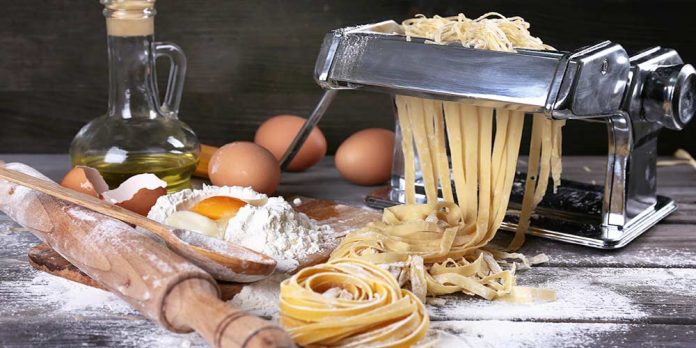A pasta maker, or pasta machine, is a kitchen tool that helps knead and shape pasta dough into the many different types of fresh pasta. This essential device for pasta lovers is available in two models: manual and electric – both of which provide a range of features depending on the price of the individual unit. As you would guess, electric, heavy-duty and more advanced pasta makers are more expensive than the basic or manual models.
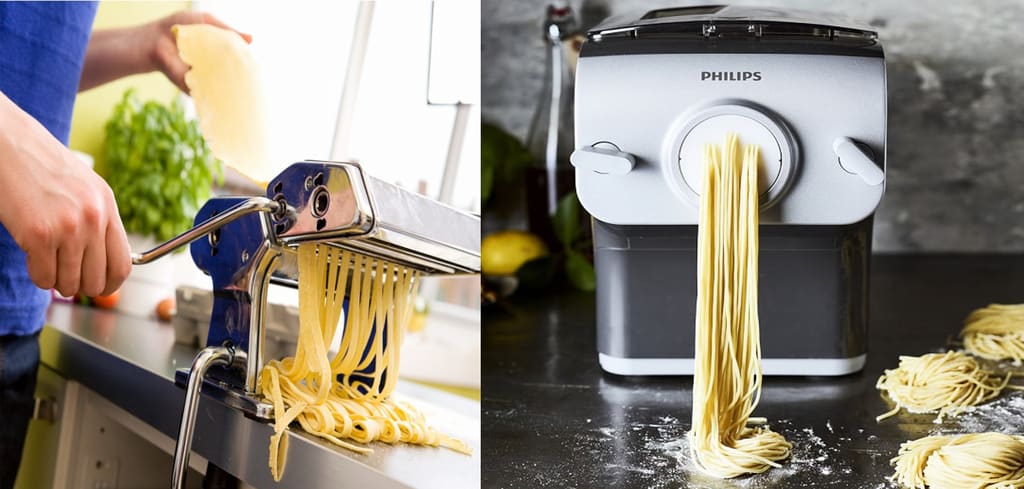
A basic, manual pasta maker typically features a counter top and a variety of fittings, such as rollers, cutters, cutting blades, and etc. Many manual pasta makers also come with attachments for creating stuffed pasta. The machine is powered through the use of a hand crank (usually located on the side).
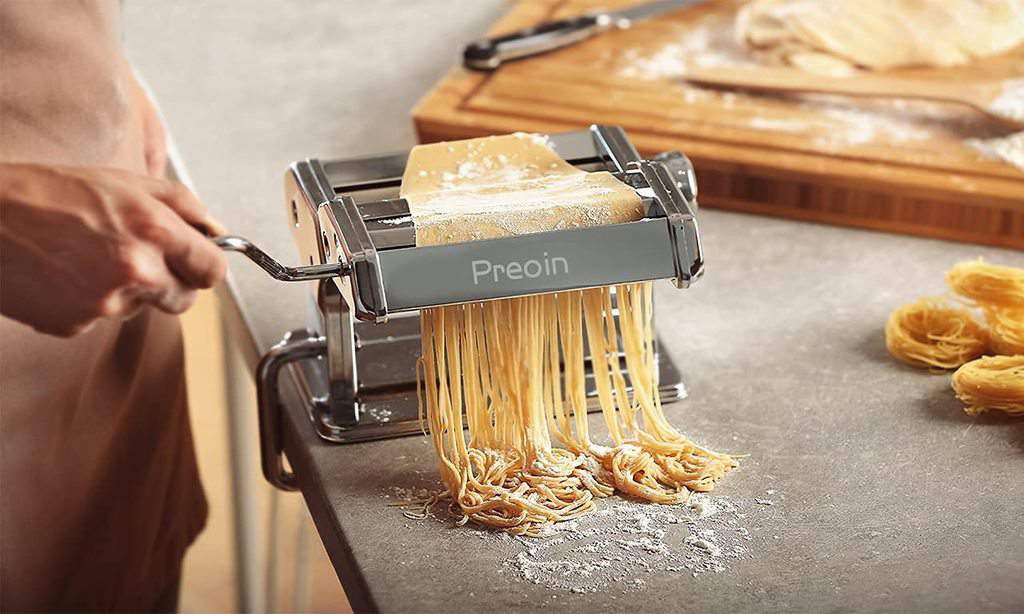
The pasta dough is first created by the chef or user using his/her own hands. Then, it’s divided into smaller chunks before being run through the rollers of this pasta maker.
The user may move the rollers progressively closer in order to adjust the thickness of the pasta. Once the sheet of pasta has been pressed to the right size, it’s passed through the cutting blade or cutting attachment on the machine. Most manual pasta makers come with several different cutting attachments for producing a range of fresh pasta sizes.
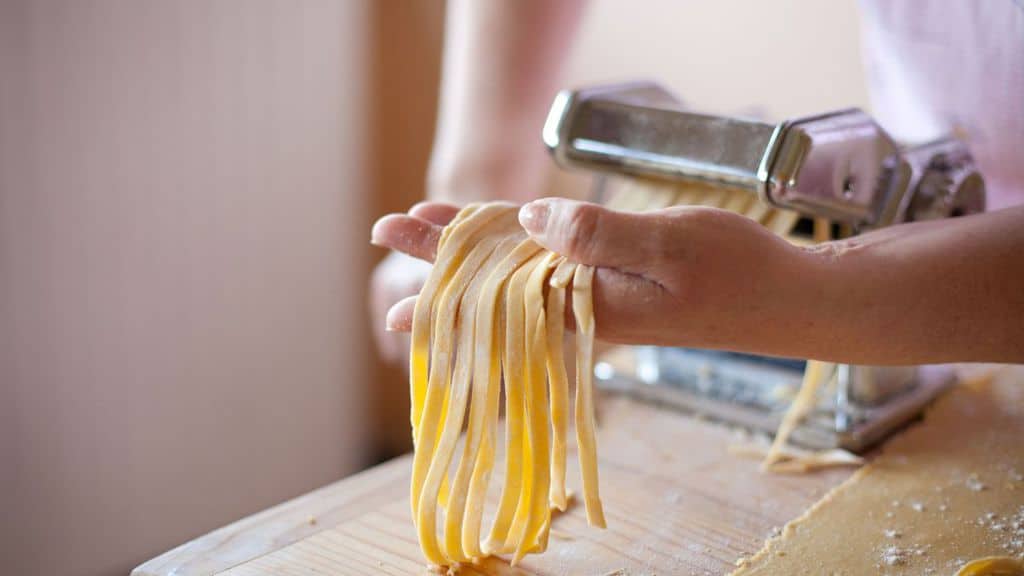
Electric or automated pasta machines come with advanced technology that is meant to make pasta making far much easier. Most electric pasta maker will simply require you to put the ingredients of your pasta. You don’t have to do any prior mixing or kneading! The motor inside the machine works like magic.
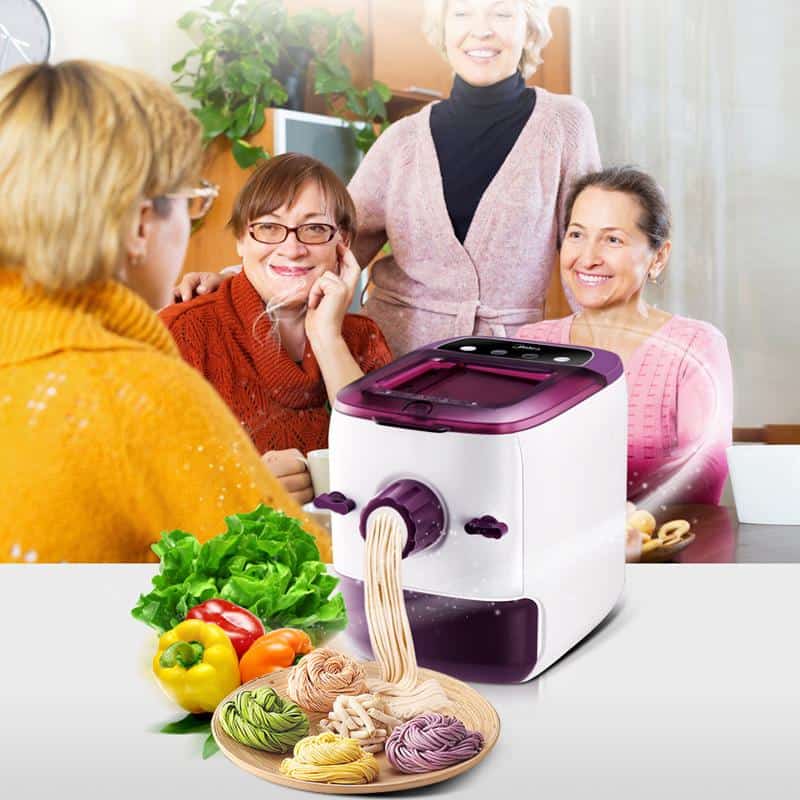
It mixes the ingredients to the right consistency, kneads the dough to the proper texture, and then cuts the dough into your desired texture. Your job is just to hit the right button.
The Benefits of Having Your Own Freshly Made Pasta At Home
Although you can get pasta in almost any food store, supermarket, restaurant or farm shop, investing in your own pasta maker will allow you to get fresh pasta any time you need some, and add your own unique ingredients.
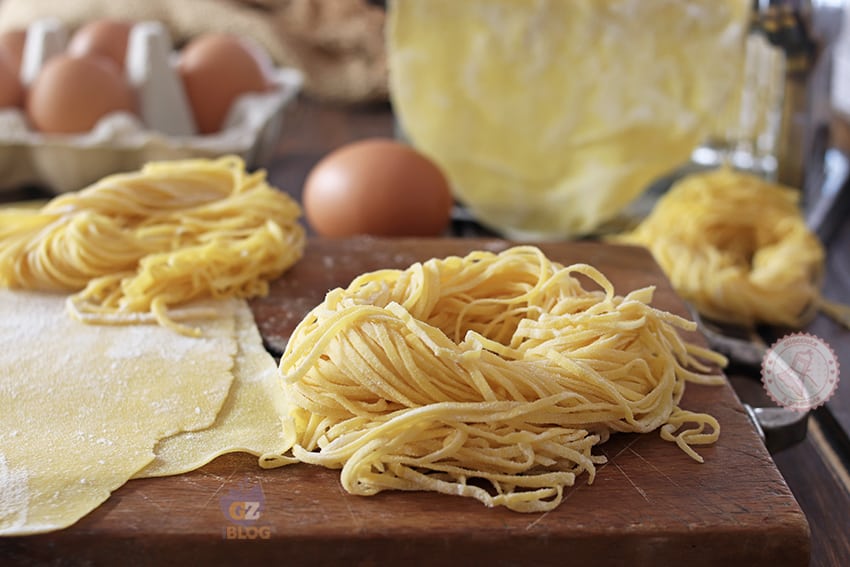
Homemade fresh pasta is also less expensive than purchasing fresh pasta from food stores or farm shop; so having your own freshly made pasta can help you to realize significant savings in your home budget. In addition, it’ll give you a chance to create a wide variety of pasta shapes (using an extruding machine), including the wonderful rigatoni, authentic oval linguine and round spaghetti.
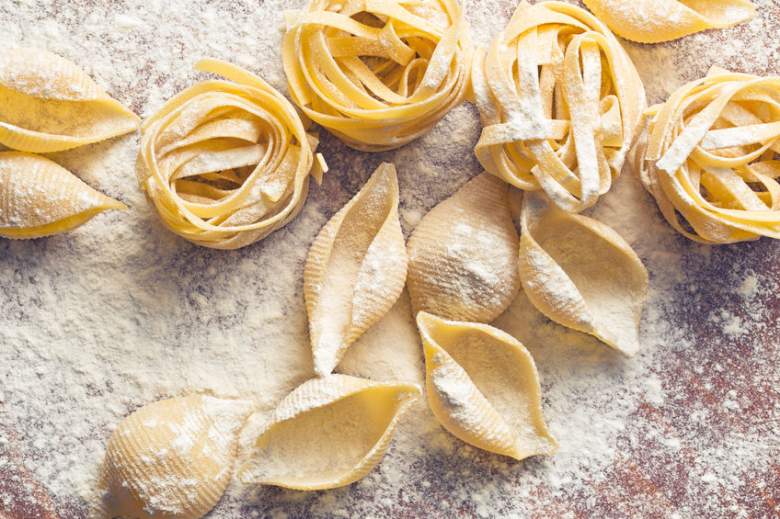
- What Is Aromatherapy Vs. What Are Essential Oils?
- What is La Tomatina in Bunol, Spain Like? What to Expect at the Famous Tomato Throwing Festival
How to Use a Pasta Maker
Electric pasta makers are very easy to operate. Once you put the ingredients, the machines will automatically mix, knead and extrude.
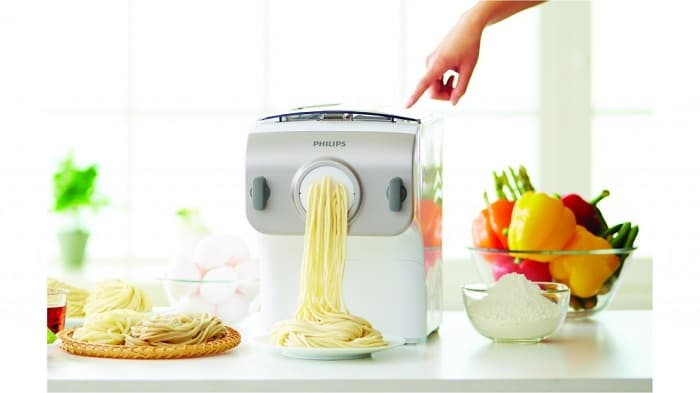
But for a manual pasta maker, you can use the following guide:
(a) Secure the pasta maker onto a table, counter-top, or any other position. Use the clamp provided with the machine. Just make sure it cannot move while you operate the hand crank.
(b) Turn the machine’s adjustment knob to its widest setting and put the crank handle into the hole that helps operate the rollers.
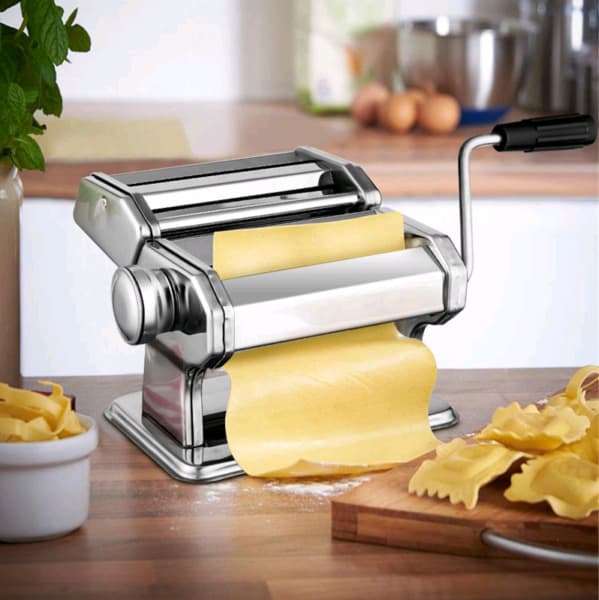
(c) Mix the ingredients and prepare the dough according to your desired recipe. Don’t forget to read the machines instructions regarding the right texture. Once you have achieved the proper texture, divide the dough into two balls, so you can work with one smaller batch at a time.
(d) Cut a small ball of your dough and pass it through the pasta maker. This is how you clean the machine prior to pasta making.

(e) Pass the dough through the machine’s rollers. Use one hand to operate the crank and the other to hold your dough as it gets out of the rollers.
(f) Then, fold the pasta dough in half lengthwise and sprinkle it lightly with dusting of flour before passing it through the rollers again. Repeat this action for about seven times.

(g) Reduce the machine’s roller spacing one notch at a time until you achieve your desired thickness.
(h) Leave your finished dough for about 15 minutes to allow it to rest and dry out. This prevents it from sticking as you run through the cutter accessory.
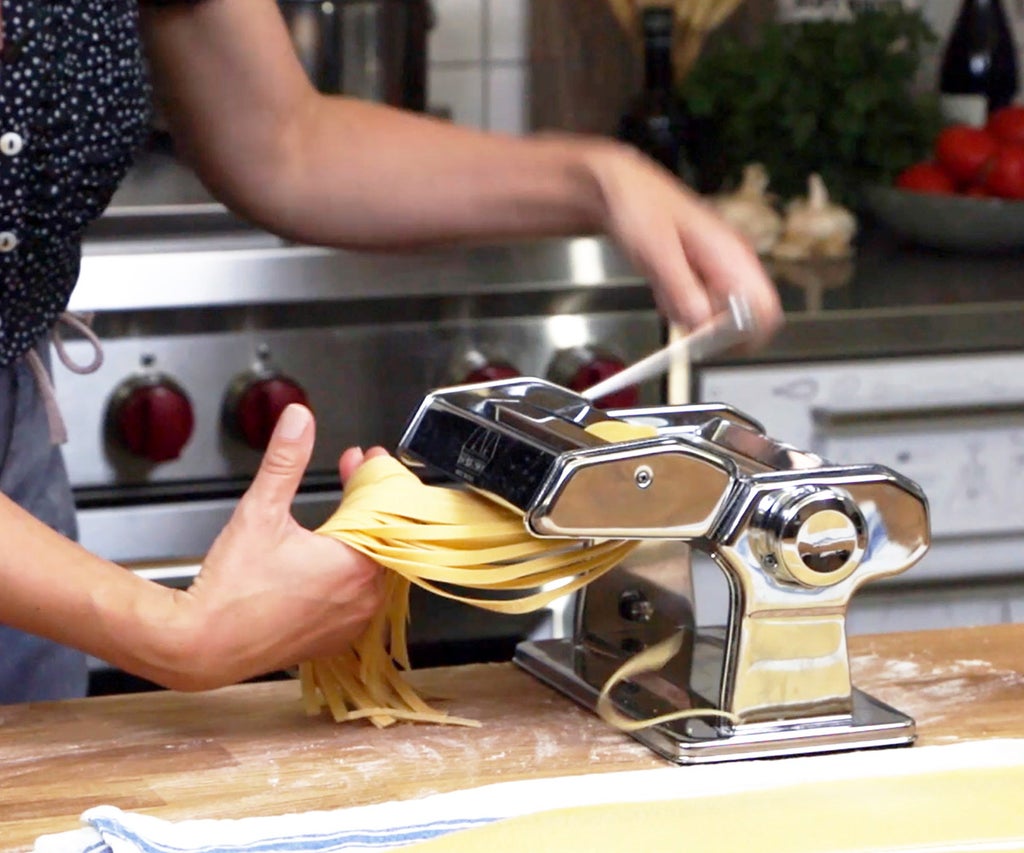
(i) Place the cutting accessory onto the machine, and set the width of your desired pasta.
(j) Sprinkle the sheet of pasta lightly with flour and pass it through the cutting blade to get fresh pasta.


